10 Best Day Trips from Cusco, Peru
The city of Cusco is often called the tourist capital of Peru, and not just because it’s a jumping-off point to Machu Picchu. There is a lengthy list of things to do in Cusco itself, but there are just as many stunning day trips to go on outside of the city.
We spent an entire month in Cusco and explored the Sacred Valley as much as we could. Whilst we feel incredibly lucky to have stayed for as long as we did, we appreciate that not everyone can do the same. For this reason we’ve put together a list of places you might want to consider visiting as well as Machu Picchu.
If you’d like to see our Cusco and Sacred Valley adventures then check out the Peru Playlist on our YouTube channel.
Disclosure: This post may contain affiliate links, which means we may receive a small commission if you click a link and purchase something. Clicking these links won’t cost you anything, but it will help us to keep this site up and running! Learn more about our affiliate policy.

10 Day Trips from Cusco, Peru
Below you can read about our top 10 day trips from Cusco that you can consider incorporating into your Peru itinerary. You may not have time for all of them, but you can pick and choose depending on how much time you have to spend in Cusco.
If you want to visit multiple sites from our list, then you can consider booking a 3-day Cusco tour that includes Machu Picchu, the Sacred Valley and Rainbow Mountain. In case you’re staying a bit longer, then you can even book a 4-day Cusco tour that also includes a trip to Humantay Lake. Otherwise, you can just browse some one day tours from Cusco.
1. Machu Picchu – The Most Popular Day Trip from Cusco
There isn’t a ‘day trips from Cusco’ blog post anywhere that wouldn’t mention Machu Picchu. As one of the main reasons people travel to Peru, we’re pretty certain that Machu Picchu is already on your list.
Tucked away to the northwest of Cusco, Machu Picchu is one of the New Seven Wonders of the World and also a UNESCO World Heritage Site.
According to historians, Machu Picchu was built by the Inca. The site consists of more than 150 buildings including houses, temples, sanctuaries and baths.
Whilst it was built in the 15th century nobody really knew about the site until Hiram Bingham found it in 1911. Although, based on some evidence, he probably wasn’t the first one to have been to the site since it was abandoned. However, he was more vocal about his discovery and wrote a book called ‘The Lost City of the Incas’ that gained a lot of attention and started bringing in visitors.
Many believe that Machu Picchu was a royal estate and sacred site for the Inca nobles. Based on the stunning landscape surrounding the site, we totally see why Inca leaders would pick this spot for their estate.
Today, hundreds of thousands of people visit Machu Picchu every year, making it the most visited place in the whole of Peru.
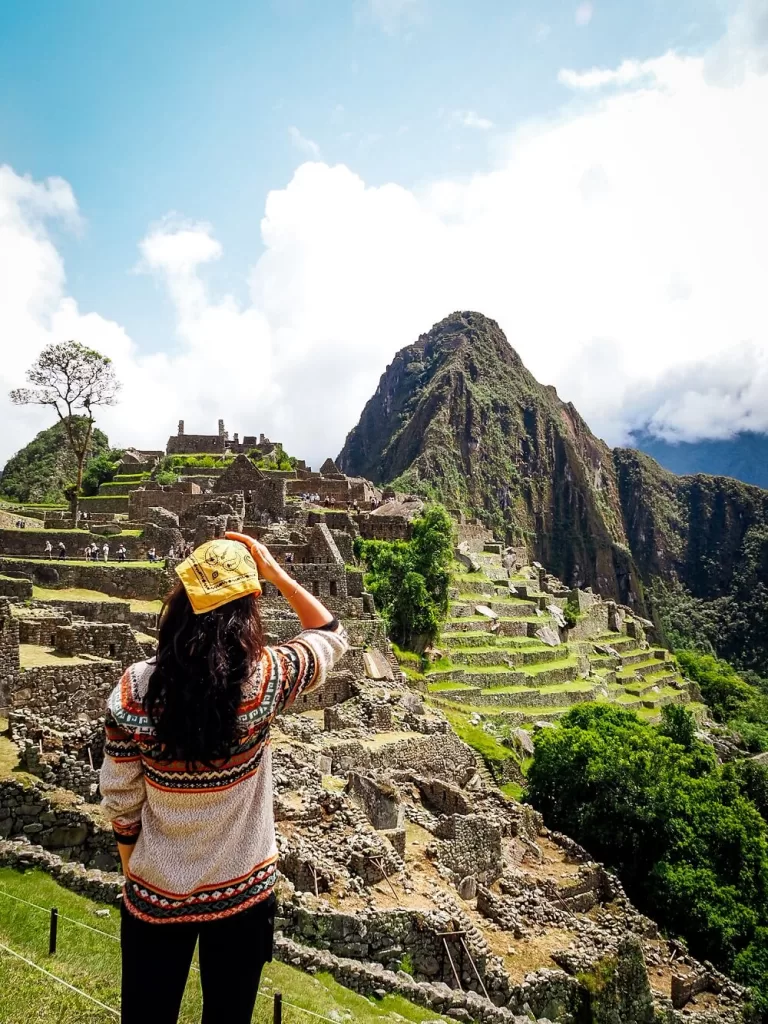
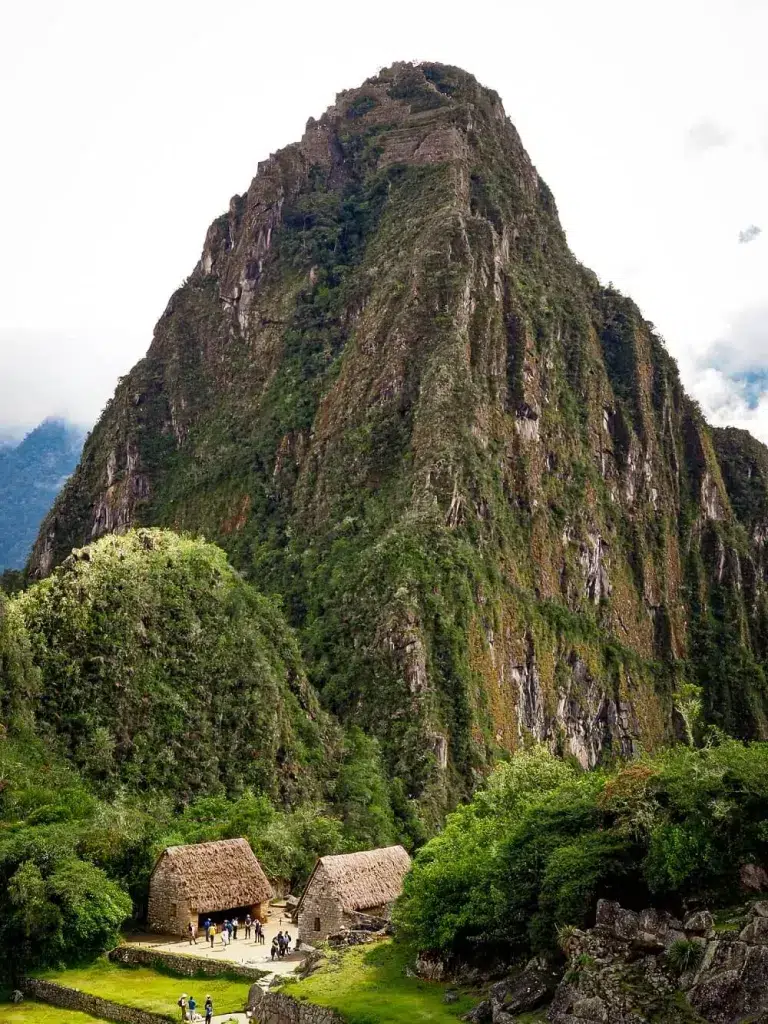
How to Get to Machu Picchu
There are many different ways you can access Machu Picchu, including multi-day treks, independent day trips or organised trips.
- Organised Day Trip. The list of day tours offered to visitors in Cusco is basically endless. It’s definitely the easiest way to reach Machu Picchu and perfect for those short on time or who don’t enjoy hiking. You can always secure your trip online if you already know when you’re going to be visiting.
- Independent Day Trip. You can visit Machu Picchu without a tour from Cusco. You can take the train from Cusco or travel to Ollantaytambo first then take the train to Aguas Calientes from there. Once in Aguas Calientes, you can either take a bus up to the entrance or hike. If you visit Machu Picchu on your own, then it’s probably best to spend a night in Aguas Calientes to make the most of your day at the site.
- Inca Trail. Possibly the most popular multi-day trek to reach Machu Picchu is the Inca Trail. Nowadays you can book on the classic 4-day trek or a shorter 2-day version depending on your time and how much you enjoy hiking. You can always find the right trek for you online.
- Salkantay Trek. Another popular trek you can consider is the slightly longer Salkantay Trek. The trail is stunning and includes a stop at Lake Humantay which many would visit anyway as part of a day trip from Cusco. You can book your trek online.
Entry Fee to Machu Picchu
The cost of entry to Machu Picchu is currently 42 USD per person. However, there are many types of admissions to Machu Picchu that you can check out on The Ministry of Culture’s website.
Normally the tours and treks would include your entry fee to Machu Picchu, but it’s always worth double checking before booking.
You have to pick a time slot when booking and these are as follows: 6 AM, 7 AM, 8 AM, 9 AM, 10 AM, 11 AM, 12 PM, 1 PM and 2 PM. You can only spend 4 hours at the site.

2. Vinicunca Rainbow Mountain – The Most Colourful Day Trip from Cusco
Possibly the second most popular day trip from Cusco is the Rainbow Mountain also known as Vinicunca, Winikunka, Montaña de Siete Colores, and Montaña de Colores.
You’re probably aware that the Rainbow Mountain wasn’t even visible until about 2015. This is because it was covered in a thick layer of snow and ice until then. Then, due to global climate change, the snow melted and revealed the colourful mountain beneath.
Thanks to mineral deposits it wasn’t just an average looking mountain, so very quickly became known as the ‘Rainbow Mountain’ and it wasn’t long before it started attracting tourists.
The Rainbow Mountain and its surrounding area is indeed a stunning place to visit and will make you feel like you’re on a different planet. However, bear in mind that the mountain is located about 5,200m (17,000ft) above sea level. That’s more than half of Mount Everest. For comparison, Machu Picchu is only 2,430m (8,000ft) and Cusco is 3,400m (11,000 ft). Unless you’re properly acclimatised, we recommend visiting with caution.
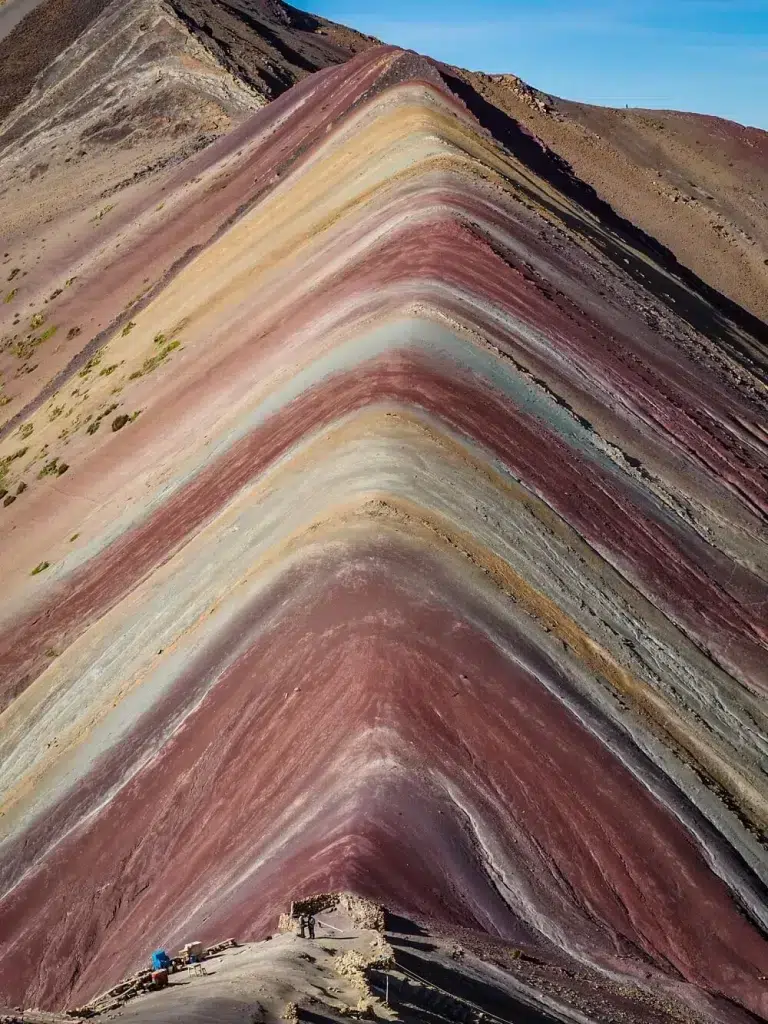
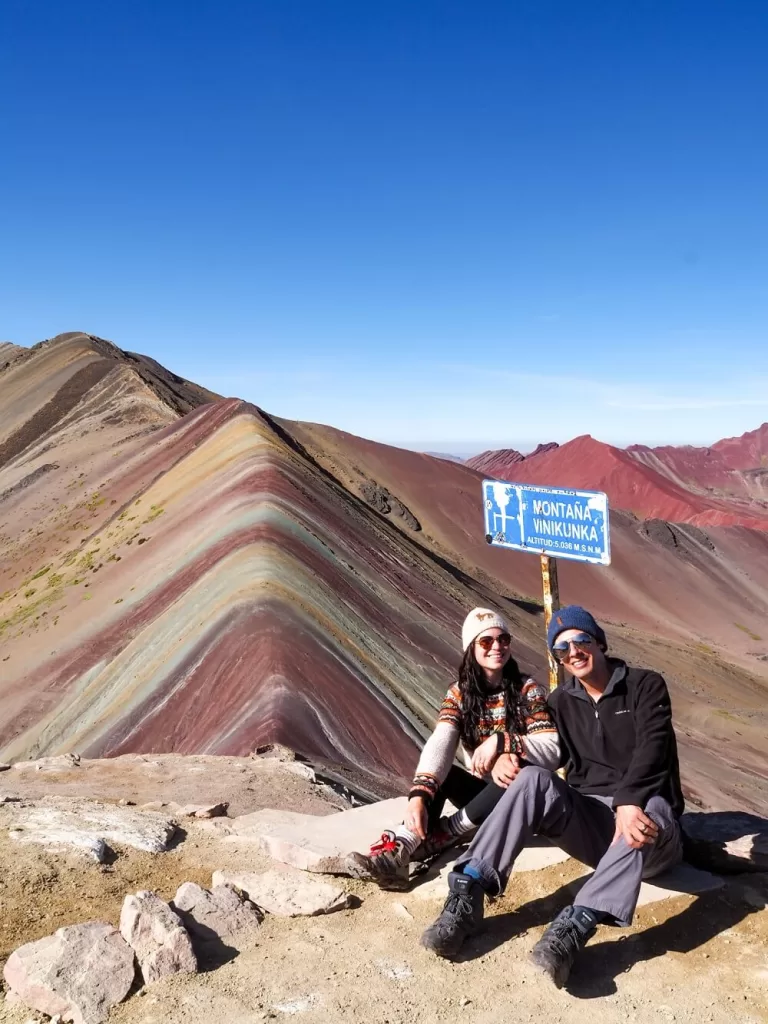
Best Ways to Visit Vinicunca Rainbow Mountain
Unless you have your own vehicle, we don’t recommend trying to visit the Rainbow Mountain independently. The best ways to visit Rainbow Mountain are either by a day tour or as a multi-day trek.
- Organised Day trip: Most people would join a day tour leaving from Cusco to visit the Rainbow Mountain. You can pre-book your trip online or find a tour once in Cusco.
- Multi-day trek: You can visit Rainbow Mountain as part of the Ausangate Trek. We did a 2-day trek that took us through the Ausangate Pass to Rainbow Mountain. It was one of the hardest but most rewarding hikes we did in Peru. If you’re a big hiker and want something more remote, then this really is the best way to visit the Rainbow Mountain.
Note. We’d also like to highlight the fact that although Rainbow Mountain is a relatively new tourist attraction, it’s quickly started to experience signs of over-tourism. Up until 2018 you had to do a more difficult hike to reach the viewpoint. However, they’ve now built a road that cuts the hike in half which of course just encourages more people to book a trip. Please be mindful of visiting this place and perhaps check out our alternative rainbow mountain recommendation below if you want to reduce the negative impact of over-tourism on local communities.
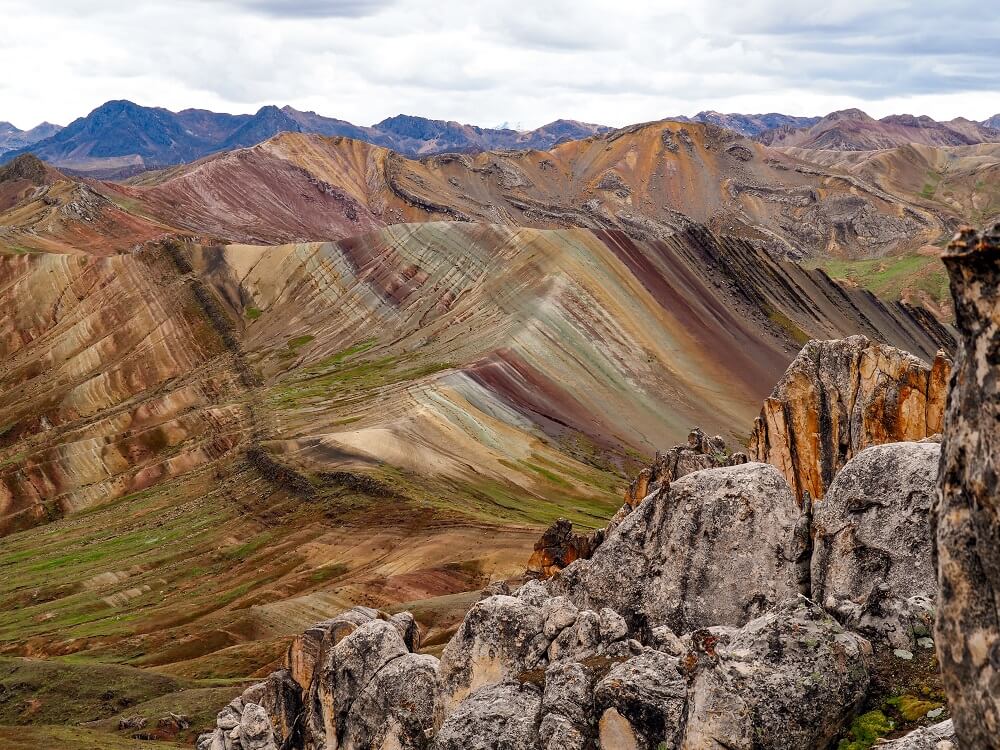
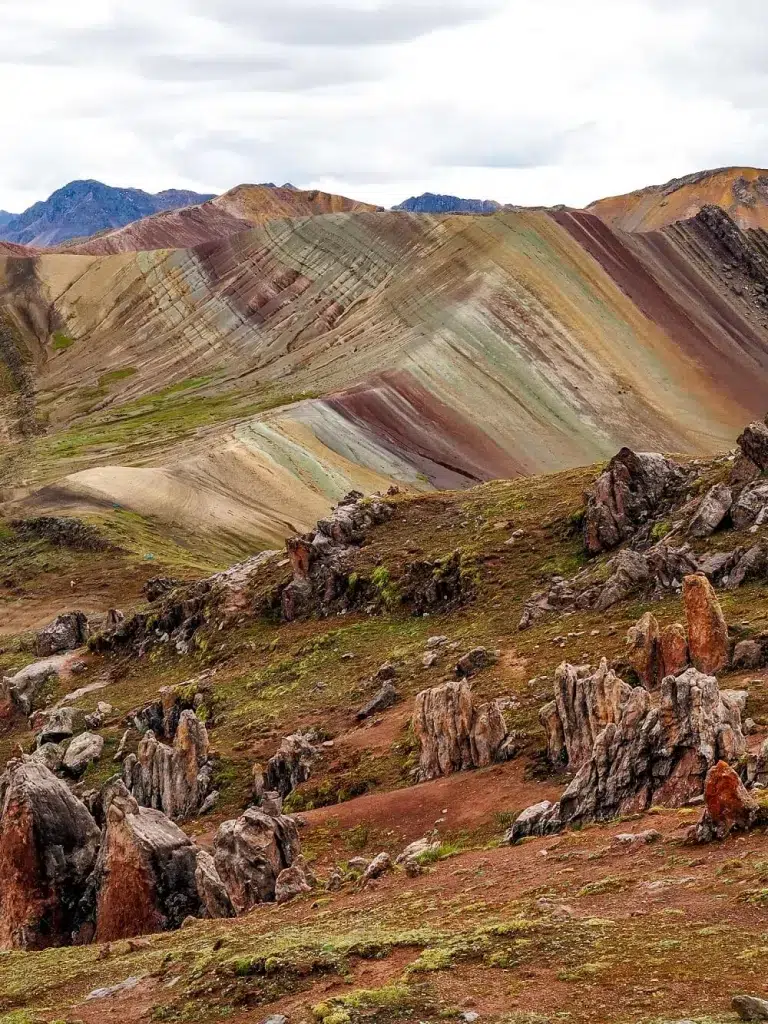

3. Palccoyo Rainbow Mountain – An Alternative Rainbow Mountain Day Trip from Cusco
We appreciate that everyone wants to visit ‘The Rainbow Mountain’ but what if we told you that there’s another one you can visit from Cusco called Palccoyo Rainbow Mountain.
Shortly after Vinicunca Rainbow Mountain gained attention, Palccoyo Rainbow Mountain started to be seen as a more peaceful alternative to Vinicunca. Apart from the fact that it’s less crowded, it also allows you to see not one but three different rainbow mountains. That’s already a win in our opinion.
Another bonus point for Palccoyo is that it sits at 4,900m (16,000 ft) which is slightly lower than Vinicunca. It might not seem like a lot, but an extra couple of hundred metres in elevation is a lot when it comes to hiking at these altitudes. Speaking of hiking, the trail is also more gentle and definitely shorter, so it could be a good alternative for people who don’t like hiking all that much.
We did a more detailed comparison of Vinicunca and Palccoyo where you can read more about the two options before deciding which Rainbow Mountain day trip you should pick from Cusco.
Best Ways to Visit Palccoyo Rainbow Mountain
Unless you have your own vehicle, we don’t recommend trying to visit Palccoyo Rainbow Mountain independently. The best way to visit this Rainbow Mountain is through a day tour. You can pre-book your trip online or find a tour once in Cusco.
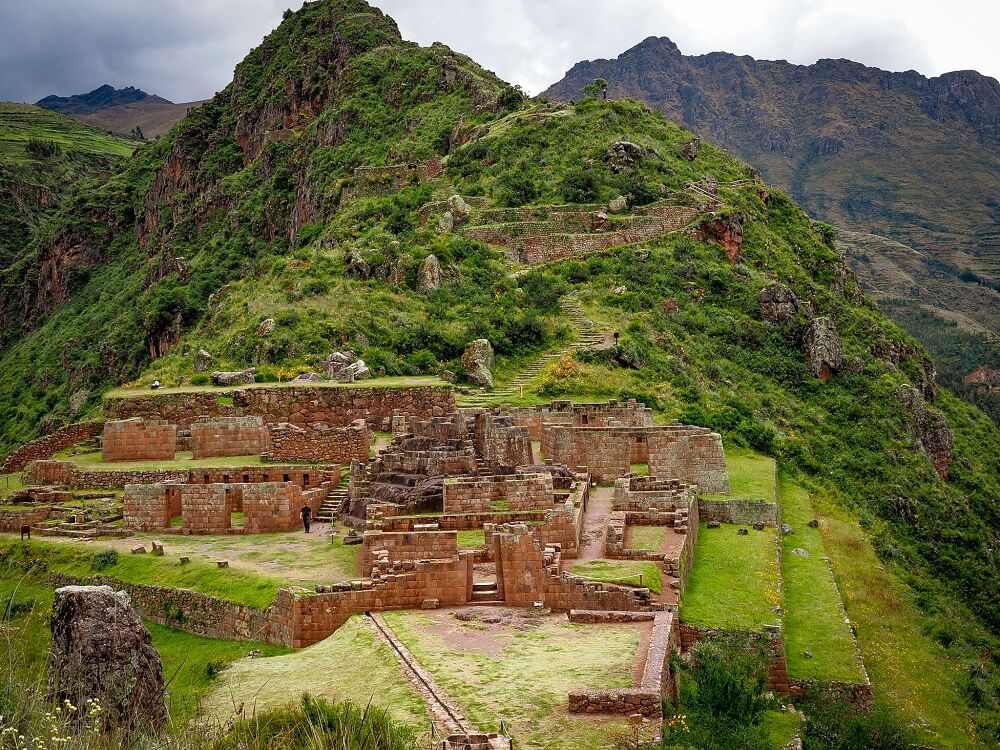
4. Pisac – The Most Beautiful Inca Ruins
Located about 35 km to the northeast of Cusco in the Sacred Valley is the small town of Pisac.
The town’s most popular attraction is the Pisac Ruins (Parque Arqueológico Pisac). These Inca ruins are considered one of Peru’s most intact ancient sites. This massive site is built on top of a mountain overlooking the town itself.
Based on its location and size, it was probably an important defensive location positioned to protect Cusco from invaders. It’s a pretty impressive place with stunning views of the Sacred valley and also a fantastic example of Inca architecture.
The town itself is also worth a visit. You can visit its artisan market, which is a great place to buy some of the traditional Peruvian souvenirs, since prices tend to be a bit lower than in Cusco. There are also plenty of restaurants where you can eat some typical Peruvian food.
Read our detailed guide on how to visit the Pisac Ruins.
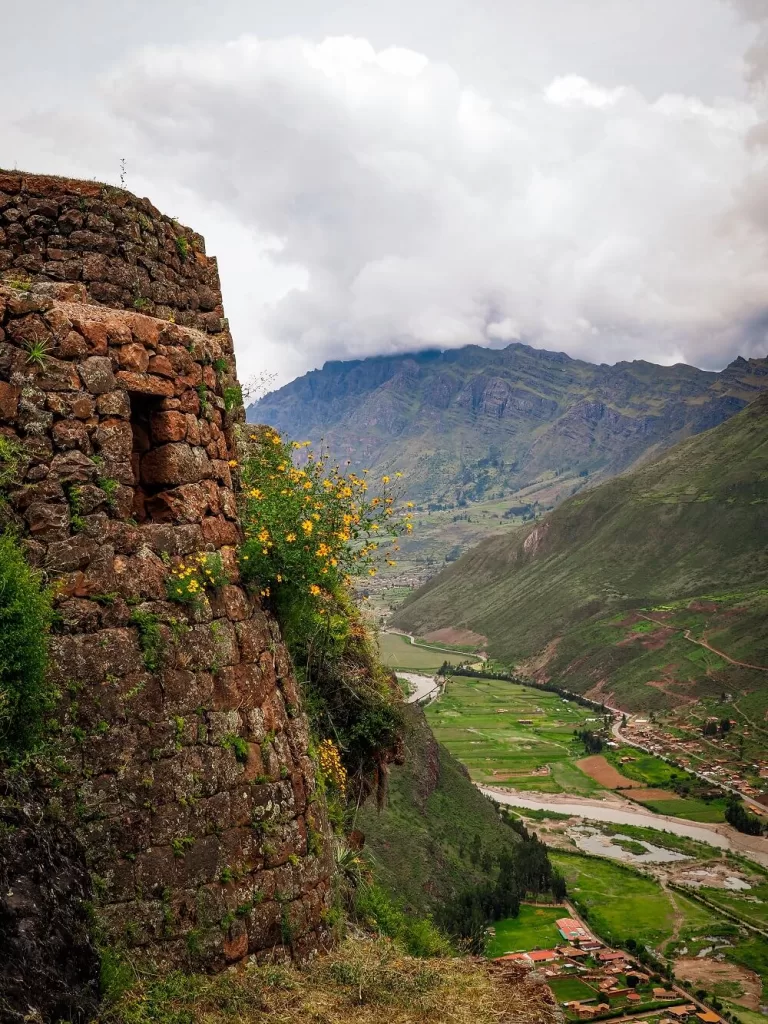
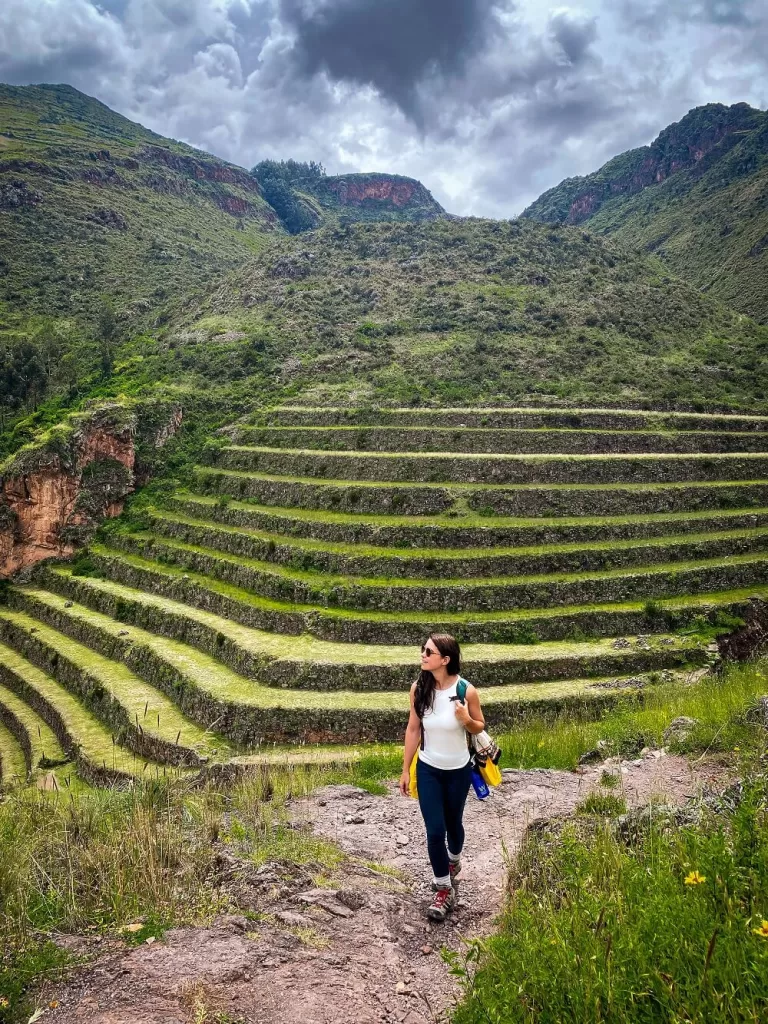
How to Get to Pisac
Located only an hour’s drive away from Cusco, you can easily access Pisac with a colectivo, a private taxi or a tour.
- Colectivo. Minivans leave about every hour from Calle Puputi in Cusco. A one-way fare is around S/.5 (1.40 USD) per person.
- Private Taxi. You can order a private taxi from your hotel or flag down a licensed driver. The cost of a taxi ride will be anywhere between S/. 50 – 90 (13-25 USD) or more for one way. It’s best to take a taxi if you’re sharing the cost with others.
- Tour. You can also join a tour to visit the Pisac Ruins. If you’re short on time or want to learn more about the Inca site, then this is a great way to visit Pisac. You can check out a list of tours here that combine multiple sites listed in this blog post.
Entry Fee to the Pisac Ruins
You can either enter the ruins with an Integral or a Circuit III Partial Boleto Turistico, which is Cusco’s Tourist Ticket. The full ticket costs S/.130 (35.40 USD). However, it allows you to visit 16 different sites located in Cusco and around the Sacred Valley. The Circuit III Partial Tourist Ticket is S/.70 (19 USD) but only lets you visit a few other sites within the Sacred Valley.
Click here to read more about the Boleto Turistico.

5. Ollantaytambo – A Must See Place En-Route to Machu Picchu
Located about 60km to the northwest of Cuscu, Ollantaytambo is the town from where you can get the train to Aguas Calientes to visit Macchu Picchu. For that reason, the town has a lot of tourists travelling through it but not that many actually spend too long there.
This is a big mistake, because Ollantaytambo is one of many fantastic day trips from Cusco due to its massive Inca Ruins that sit just above the town. With careful planning, you can visit the town and its Inca ruins and head to Aguas Calientes on the same day.
Ollantaytambo became an important Inca city, and was also the royal estate of the Inca Emperor Patchacuti after he conquered the town. He built a fortress there in the mid-15th century to bring local tribes under Inca control.
Later, when Manco Inca escaped from Cusco after the Spanish arrived, he established his headquarters in the town. In 1737, Ollantaytambo was the site of the Battle in Ollantaytambo between the Incas and the Spanish before the Spanish eventually took control.
During the 19th century, many foreign explorers took an increased interest in the ruins and also published their findings. In 1911, even Hiram Bingham III stopped here during his search for Machu Picchu.
Read our detailed guide on how to visit the Ollantaytambo Ruins.
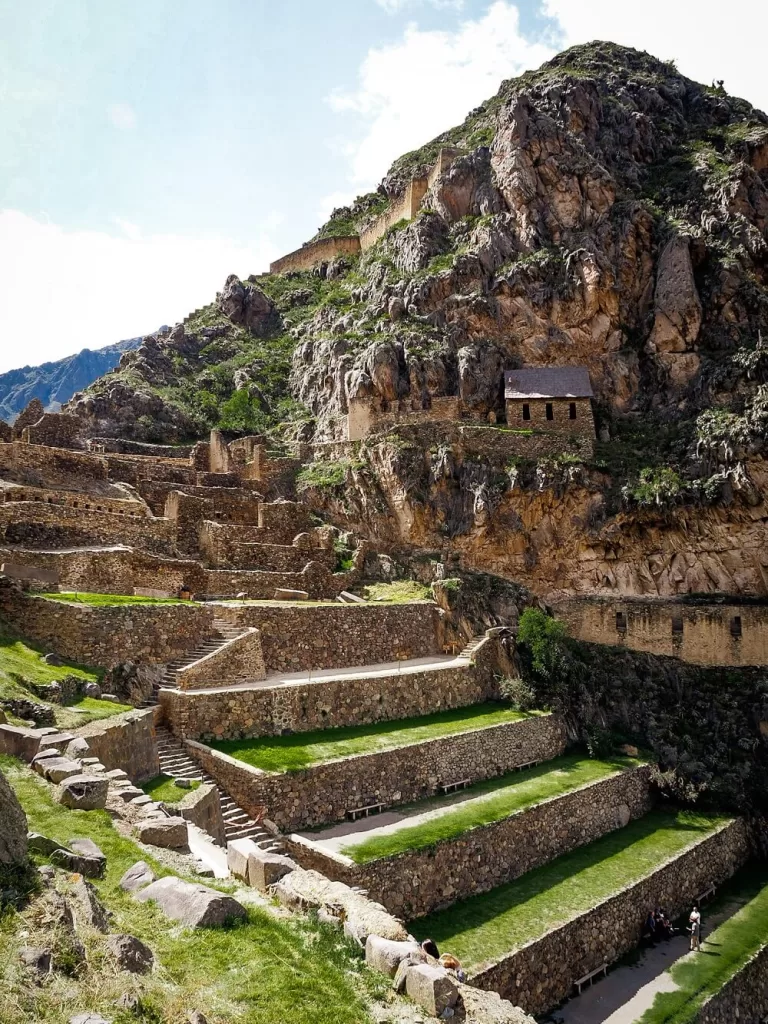
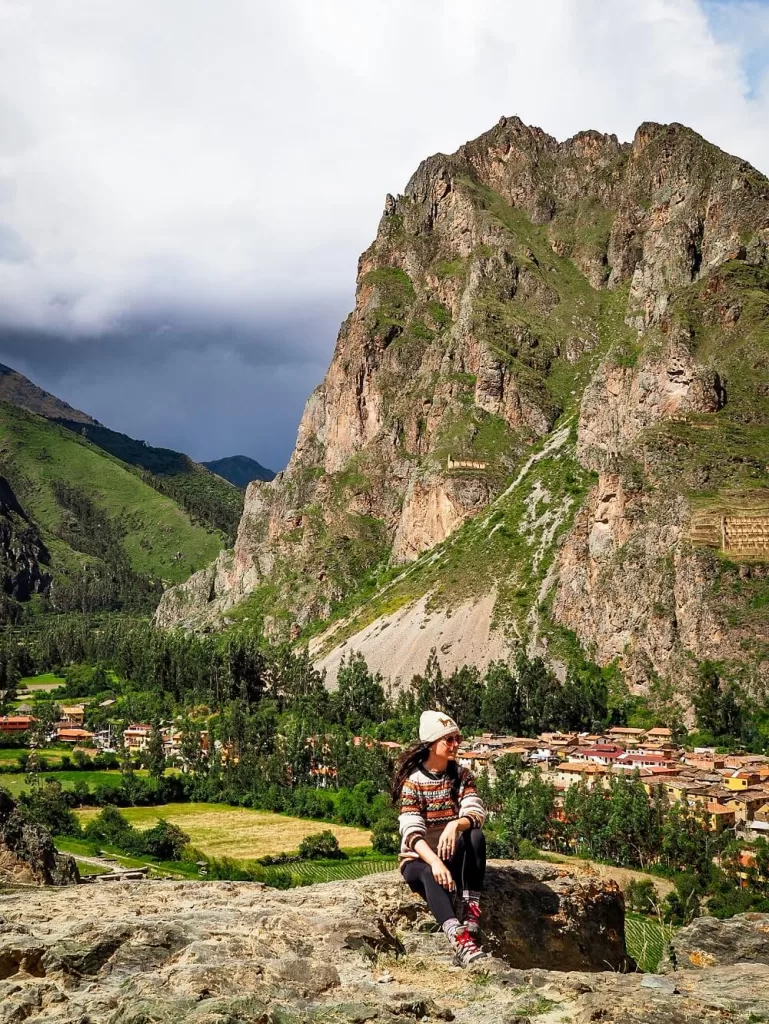
How to Get to Ollantaytambo
Located about a two hour drive from Cusco, you can easily access Ollantaytambo with a colectivo, a private taxi or a tour.
- Colectivo. Minivans leave regularly from Calle Pavitos and Av. Grau in Cusco. A one-way fare is only S/.10 (3 USD) per person.
- Private Taxi. You can order a private taxi from your hotel or flag down a licensed driver. The cost of a taxi ride will be anywhere between S/. 100 – 200 (27 – 55 USD) for one way. It’s best to take a taxi if you’re sharing the cost with others.
- Tour. You can also join a tour to visit the Ollantaytambo Ruins. If you’re short on time or want to learn more about the Inca site, then this is a great way to visit Ollantaytambo. You can check out a list of tours here that combine multiple sites listed in this blog post.
Entry Fee to the Ollantaytambo Ruins
You can either enter the ruins with an Integral or a Circuit III Partial Boleto Turistico, which is Cusco’s Tourist Ticket. The full ticket costs S/.130 (35.40 USD). However, it allows you to visit 16 different sites located in Cusco and around the Sacred Valley. The Circuit III Partial Tourist Ticket is S/.70 (19 USD) but only lets you visit a few other sites within the Sacred Valley.
Click here to read more about the Boleto Turistico.
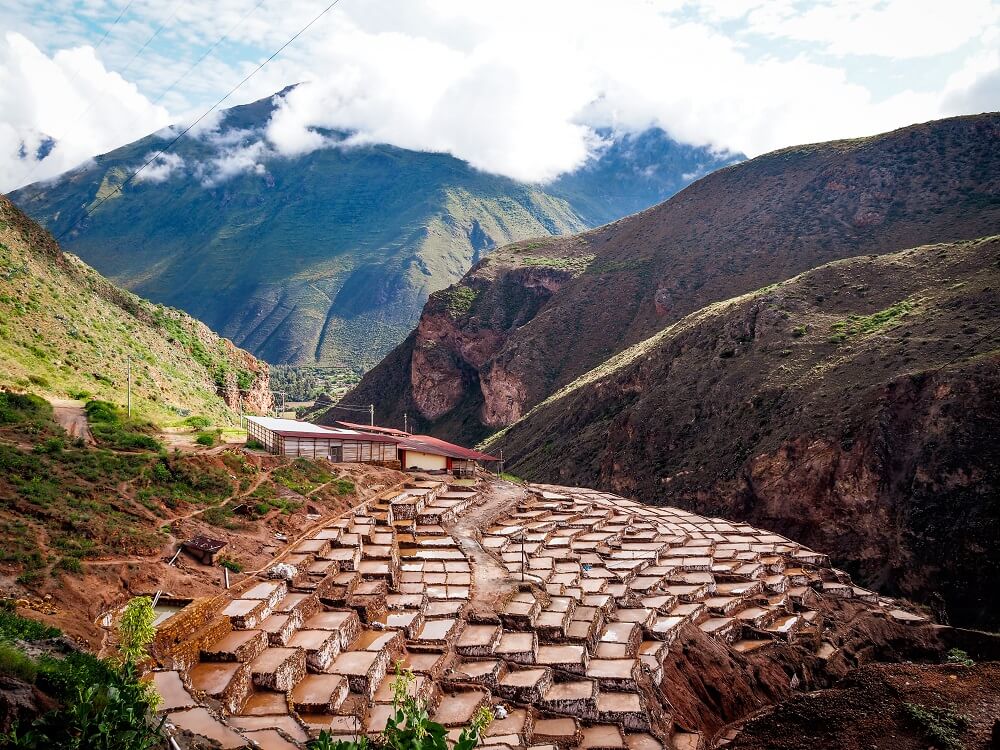
6. Maras Salt Mines (Salineras de Maras) – The Most Unique Day Trip from Cusco
Located about 55km to the northwest of Cusco, just outside the town of Maras, is a very unique Pre-Inca site called the Maras Salt Mines.
The ancient salt mines that look like rice terraces from a distance were there even before the Inca. The water that goes into the man-made pools comes from a subterranean natural spring. The water is mixed with salt deposits from prehistoric salt lakes.
Somehow the people of this region learnt how to collect this water and evaporate it to get salt as the end product of the process. These salt pools are still used today by local families. Each family living in Maras has one or more pools to take care of.
Since you don’t normally see salt pools on the side of a mountain, it’s definitely a one-of-a-kind day trip from Cusco you simply cannot miss.
Read our detailed guide on how to visit the Maras Salt Mines.
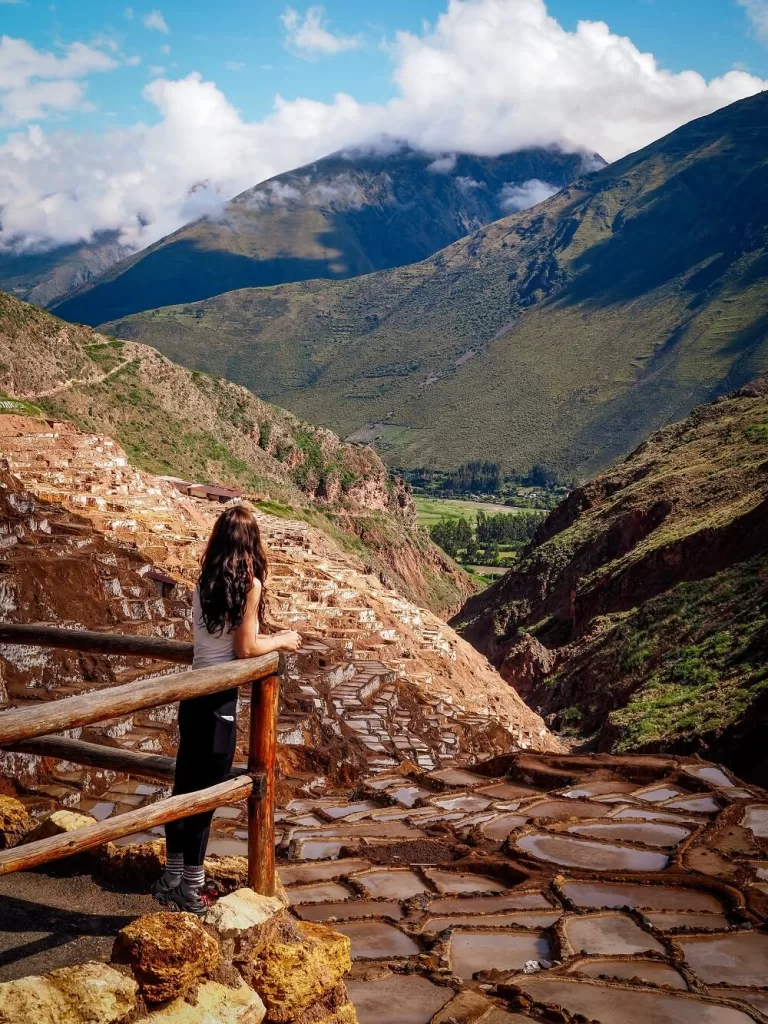
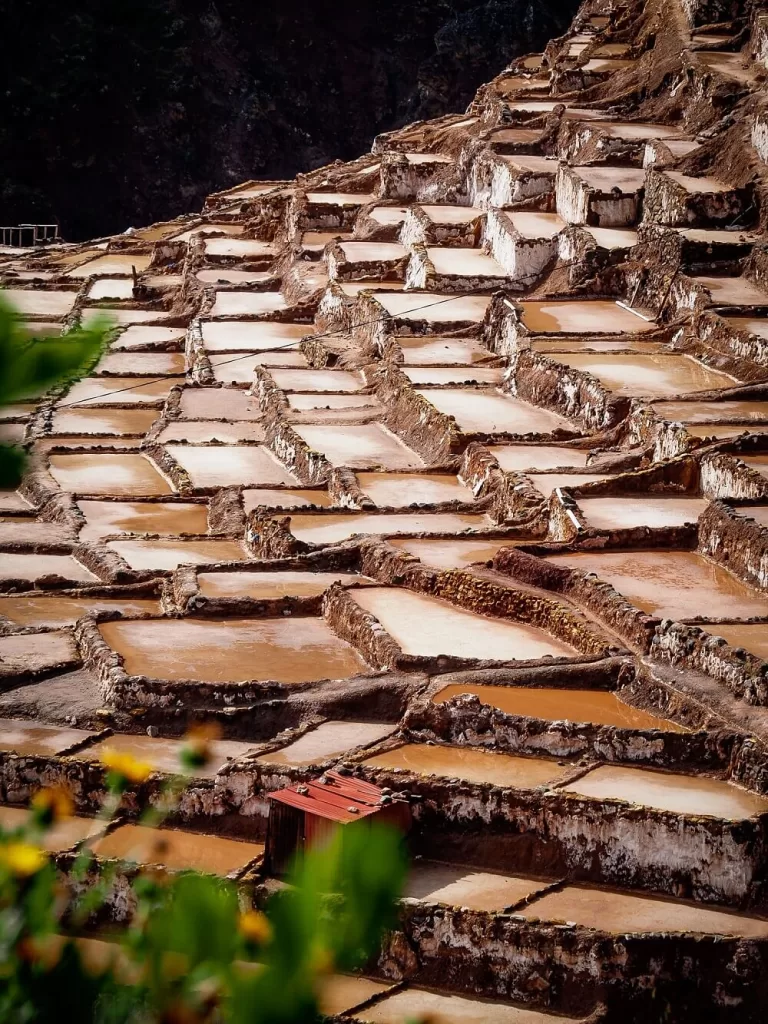
How to Get to the Maras Salt Mines
Located an hour and 15 minutes drive from Cusco, you can access Maras in a few different ways.
- Colectivo. Minivans towards Maras leave Cusco from the colectivo station located at Calle Pavitos and Av. Grau. Make sure to tell the driver that you’re going to Maras and wish to be dropped off there. A one-way fare is S/.5 (1.75 USD) per person. Once in Maras, you can either hike or get a taxi to the Salt Mines.
- Private Taxi. You can order a private taxi from your hotel or flag down a licensed driver. The cost of a taxi ride will be anywhere between S/. 150 – 200 (40 – 55 USD) for one way. It’s best to take a taxi if you’re sharing the cost with others.
- Tour. You can also join a tour to visit the Maras Salt Mines. If you just want to have a short half day trip from Cusco, then check out this tour. For those looking for something a bit more adventurous, you can check out this ATV tour and ride through the Sacred Valley on a quad bike. You can also check out a list of tours here that combine multiple sites listed in this blog post.
Entry Fee to Maras Salt Mines
Entry fee to the Maras Salt Mines is S/.10 (3 USD) per person.
Note that the Maras Salt Mines aren’t included in the Boleto Turistico (Cusco’s tourist ticket).
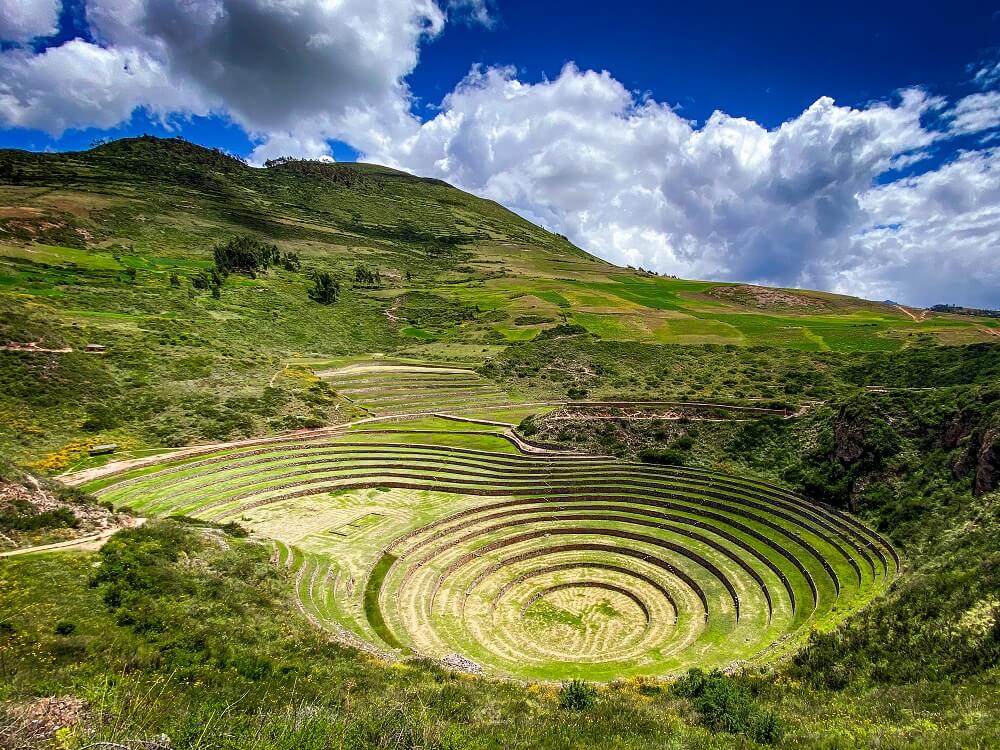
7. Moray Ruins – Another Unique Inca Site
Another slightly different Inca site you can consider adding to your Cusco day trips list is the Moray Ruins. Just like the Maras Salt Mines, the Moray Ruins are located just outside of the town of Maras.
You might think that after seeing one or two Inca sites, you kind of know what to expect. Well, the Moray Ruins are definitely different to the ones you might have visited around Cusco, in Pisac or in Ollantaytambo. The site is comprised of three massive circular terraces built in depressions that look like huge amphitheatres.
If you’re wondering what the Inca’s used this site for then you aren’t the only one. Nobody really knows exactly. However, there are a few popular theories.
The most popular one is that the ruins were used for agricultural research. Apparently, channels were built into the terraces that fed in water from nearby reservoirs. Anthropologists believe that the temperature difference and different angles of the sun hitting the terraces was the way Inca’s experimented with growing crops at such high altitude.
Other theories include the site being a ceremonial centre or a re-purposed open-pit mine.
Read our detailed guide on how to visit the Moray Ruins.
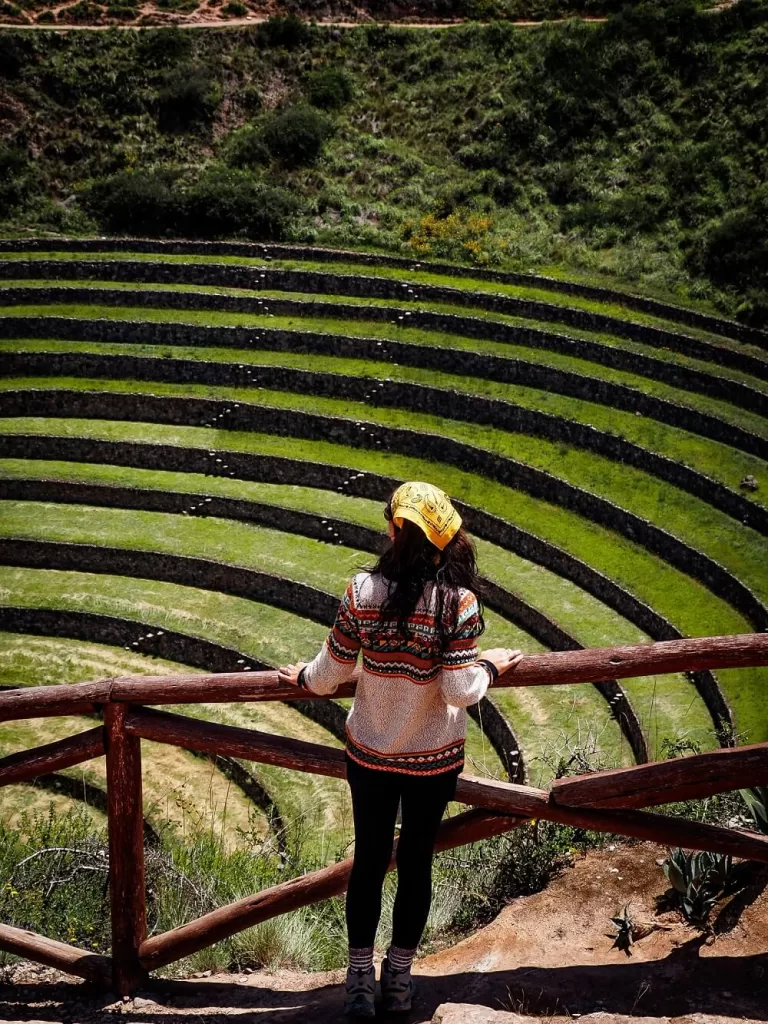
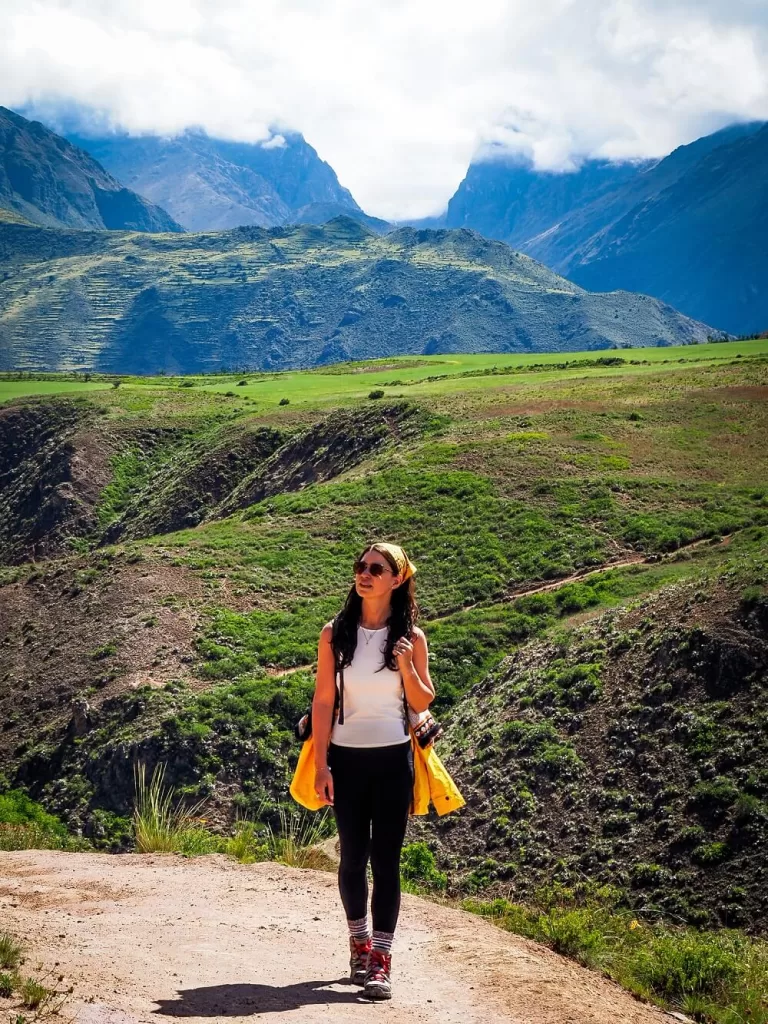
How to Get to the Moray Ruins
Located an hour and 15 minutes drive from Cusco, you can access Moray in a few different ways.
- Colectivo. Minivans towards Maras leave Cusco from the colectivo station located at Calle Pavitos and Av. Grau. Make sure to tell the driver that you’re going to Maras and wish to be dropped off there. A one-way fare is S/.5 (1.75 USD) per person. Once in Maras you can either hike or get a taxi to Moray.
- Private Taxi. You can order a private taxi from your hotel or flag down a licensed driver. The cost of a taxi ride will be anywhere between S/. 150 – 200 (40 – 55 USD) for one way. It’s best to take a taxi if you’re sharing the cost with others.
- Tour. You can also join a tour to visit the Moray Ruins. If you just want to have a short half day trip from Cusco, then check out this tour. For those looking for something a bit more adventurous, you can check out this ATV tour and ride through the Sacred Valley on a quad bike. You can also check out a list of tours here that combine multiple sites listed in this blog post.
Entry Fee to the Moray Ruins
You can either enter the ruins with an Integral or a Circuit III Partial Boleto Turistico, which is Cusco’s Tourist Ticket. The full ticket costs S/.130 (35.40 USD). However, it allows you to visit 16 different sites located in Cusco and around the Sacred Valley. The Circuit III Partial Tourist Ticket is S/.70 (19 USD) but only lets you visit a few other sites within the Sacred Valley.
Click here to read more about the Boleto Turistico.
8. Chinchero Town and Ruins – The Best Cultural Day Trip from Cusco
Located about 30km to the northwest of Cusco, Chinchero is definitely a lesser visited archaeological site compared to some of the ones mentioned above. Although less popular, it’s still one of many fantastic day trips from Cusco you can consider.
Chinchero is one of the most picturesque towns in the region, surrounded by the snow-capped mountains of the Vilcabamba range, including Salkantay, and lagoons such as Huaypo and Piuray. When you visit the town it’ll feel like time has stopped there compared to the very touristy and busy Cusco.
Chinchero was an important urban centre where Inca Tupac Yupanqui, the son of Pachacutec, resided. He built his palace here and also aqueducts and terraces for agricultural purposes.
During the Spanish Conquest, Viceroy Toledo ordered the construction of the current church (The Church of the Virgin of Nativity) which was built on top of the old Inca palace.
The town is also considered the centre of weaving in the country. You can visit the textile centre where you can learn about the traditional ways the wool is prepped, coloured and then weaved into beautiful garments.
Like many towns in the Sacred Valley, Chinchero also has a colourful market where you can buy lots of local products.
How to Get to the Chinchero Ruins
Located about 45 minutes’ drive from Cusco, you can access Chinchero in a few different ways.
- Colectivo. Minivans towards Chinchero leave Cusco from the colectivo station located at Calle Pavitos and Av. Grau. Make sure to tell the driver that you’re going to Chinchero and wish to be dropped off there. A one-way fare is S/.5 (1.75 USD) per person.
- Private Taxi. You can order a private taxi from your hotel or flag down a licensed driver. The cost of a taxi ride will be anywhere between S/. 50 – 100 (14 – 28 USD) for one way. It’s best to take a taxi if you’re sharing the cost with others.
- Tour. You can also join a tour to visit the Chinchero Ruins. You can check out some tours here that combine multiple sites listed in this blog post.
Entry Fee to the Chinchero Ruins
You can either enter the ruins with an Integral or a Circuit III Partial Boleto Turistico, which is Cusco’s Tourist Ticket. The full ticket costs S/.130 (35.40 USD). However, it allows you to visit 16 different sites located in Cusco and around the Sacred Valley. The Circuit III Partial Tourist Ticket is S/.70 (19 USD) but only lets you visit a few other sites within the Sacred Valley.
Click here to read more about the Boleto Turistico.

9. Lake Humantay (Laguna Humantay) – Most Picturesque Day Trip from Cusco
Lake Humantay (Laguna Humantay) is a beautiful emerald gem in the Andes.
Sitting at 4,250m (~14,000 ft) above sea level, this emerald lake with the Humantay mountain towering above it, has to be one of the dreamiest places in the area.
The lake gets its emerald colour from the minerals within the glacier that melt into the lake. Depending on the time of year you’re visiting, the shade of the colours can vary a bit.
You’ll have to complete a 1.5 to 2 hour long hike to reach it, gaining a good 350m of elevation. For this reason it’s important to acclimatise to high altitude before completing this hike. We recommend spending a day or two in Cusco first or visit other Inca Ruins in the Sacred Valley from this list. However, this hike is also a great way to train your body if you’re doing the Inca Trail later.
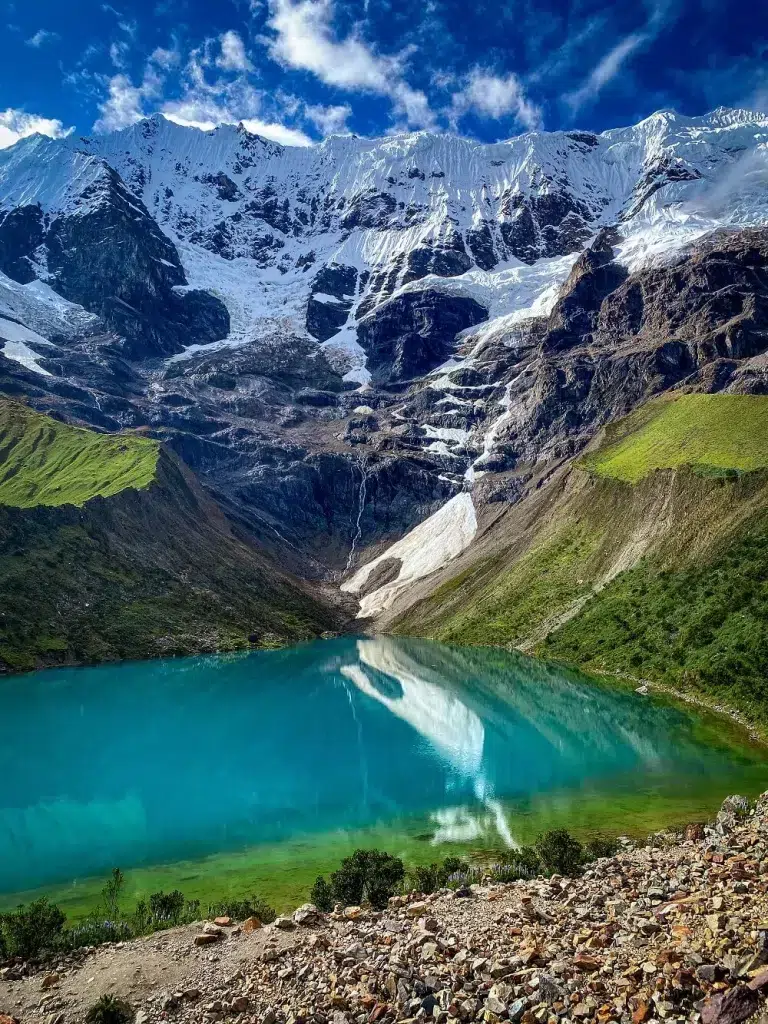
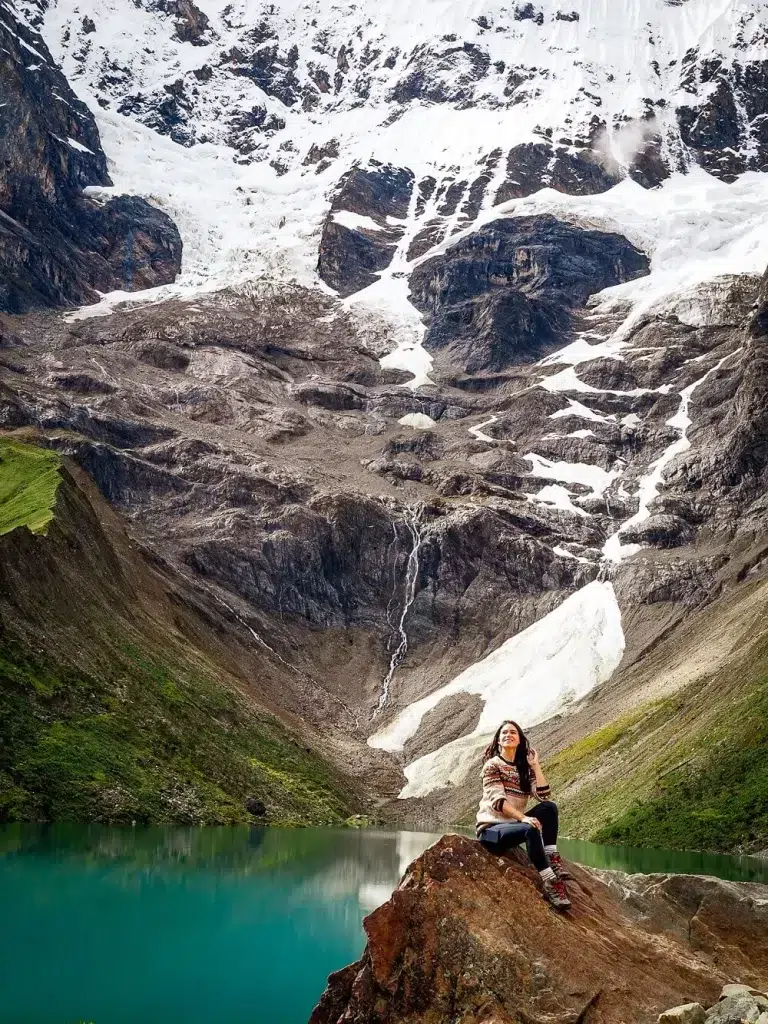
Best Ways to Visit Lake Humantay
There are three main ways to visit Lake Humantay: a multi-day trek, an organised day tour or an independent trip.
- Multi-day trek: You can visit Lake Humantay as part of the Salkantay Trek. One of the reasons we picked the Salkantay Trek over the Inca Trail was that it included Lake Humantay. This way we didn’t have to visit it on a separate trip.
- Organised Day trip: If you’re not into multi-day trekking, then joining a day trip from Cusco will be the easiest way to see this stunning lake.
- Independent Day Trip: Visiting Lake Humantay independently might be a bit more complicated. The best way is to hire a taxi, but you’ll need to hire a driver for the whole day since the lake is a 3-hour drive from Cusco. The cost of a taxi will be closer to 100 USD, so unless you share the cost with a few people it can be quite pricey.
Entry Fee to Lake Humantay
You will have to pay an entrance fee of S/. 10 (3 USD) per person. Most organised tours will already include this in the price, but it’s worth double checking when booking.
10. Tipón – A Lesser Visited Inca Ruin
Whilst you may have heard about the above mentioned Inca sites already, there’s one that doesn’t get too much attention called Tipón Archaeological Site.
Located only about 26km to the east of Cusco, the Tipón Inca Ruins are one of the easiest day trips you can do from the city. In fact, you can visit Tipón in about half a day, which will allow you to have time to explore more of Cusco.
The archaeological site is comprised of different enclosures, terraces, platforms and most importantly irrigation systems. The irrigation system is actually one of the most intact ones in the country and is still in operation today.
The site’s actual past use is a bit of a mystery, but as always there are theories. The most popular one is that it was an experimental farm, a bit like the Moray Ruins. There’s also some evidence that the site was possibly part of an estate of the Inca nobility. Of course, some suggest that the ruins were once used as a ceremonial site where rituals took place.
How to Get to the Tipón Ruins
Located only about a 40 minute drive from Cusco, you can visit Tipón in a few different ways.
- Colectivo. Minivans towards Urcos leave Cusco from the colectivo station located at Avenida de la Cultura. Make sure to tell the driver that you’re going to Tipón and wish to be dropped off there. A one-way fare is S/.5 (1.75 USD) per person.
- Private Taxi. You can order a private taxi from your hotel or flag down a licensed driver. The cost of a taxi ride will be anywhere between S/. 150 – 200 (40 – 55 USD) one way. It’s best to take a taxi if you’re sharing the cost with others.
- Tour. You can also join a tour to visit the Tipón Ruins. You can check out a list of tours here that combine multiple other sites in the area.
Entry Fee to the Tipón Ruins
You can either enter the ruins with an Integral or a Circuit II Partial Boleto Turistico, which is Cusco’s Tourist Ticket. The full ticket costs S/.130 (35.40 USD). However, it allows you to visit 16 different sites located in Cusco and around the Sacred Valley. The Circuit II Partial Tourist Ticket is S/.70 (19 USD) but only lets you visit a few other sites within Cusco and the Sacred Valley.
Click here to read more about the Boleto Turistico.
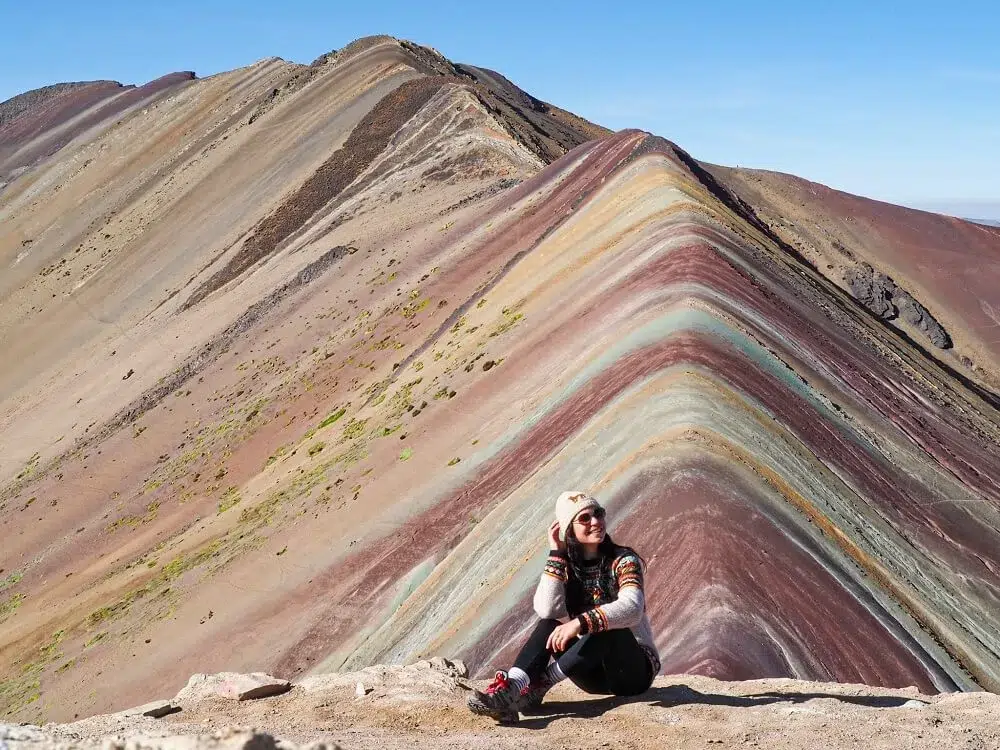
Final Thoughts on Day Trips from Cusco, Peru
We hope that this guide gave you a good idea of the day trips that you can now add to your Cusco itinerary. We appreciate that it’s unlikely that you’ll be able to visit all of them, unless you’re staying in Cusco for a bit longer.
However, we hope that you may have found at least one or two interesting places that you would now love to visit apart from Macchu Picchu and Rainbow Mountain. There are just so many places to see in this part of Peru that most tourists don’t even know about or don’t have the time to visit. We hope that you do and that you’ll have a fantastic time wherever you decide to go.
Have you ever been to Cusco and taken a day trip somewhere in the Sacred Valley? If so, where did you go and how much of the area did you manage to explore? If not, which day trips from Cusco would you add to your bucket list? Let us know in the comments below.
Now, let your adventure begin,

Our Top Travel Resources
Accommodation: For hotels we always use Booking.com and Hostelworld for hostels. We also book longer stays on Airbnb or Vrbo.
Flights: To find the best flight prices we always check Skyscanner, Google Flights or WayAway. Then we also check the airlines’ websites too for comparison.
Car Rentals: We use Discover Cars when we want to rent a car as it compares local, national and international companies.
Activities: If we book organised tours we always check either GetYourGuide or Viator.
Foreign Currency: Whenever we can we prefer to pay in local currency and for that we always use our Wise card. We can easily withdraw money from the ATM or pay by card at most shops and restaurants.
Travel Insurance: We never go anywhere without travel insurance. You never know what will happen on your trip, so good travel insurance like SafetyWing can protect you in case of injury, illness, theft and cancellations.
eSIM and VPN: To get data abroad we use Airalo which is an app that allows you to download a prepaid eSIM to your phone in over 190 countries. Make sure to have a VPN to avoid hackers accessing your personal data when using public WIFI. We use Surfshark which is the only VPN that offers one account on unlimited devices.
Remember…It all starts with a Pin…
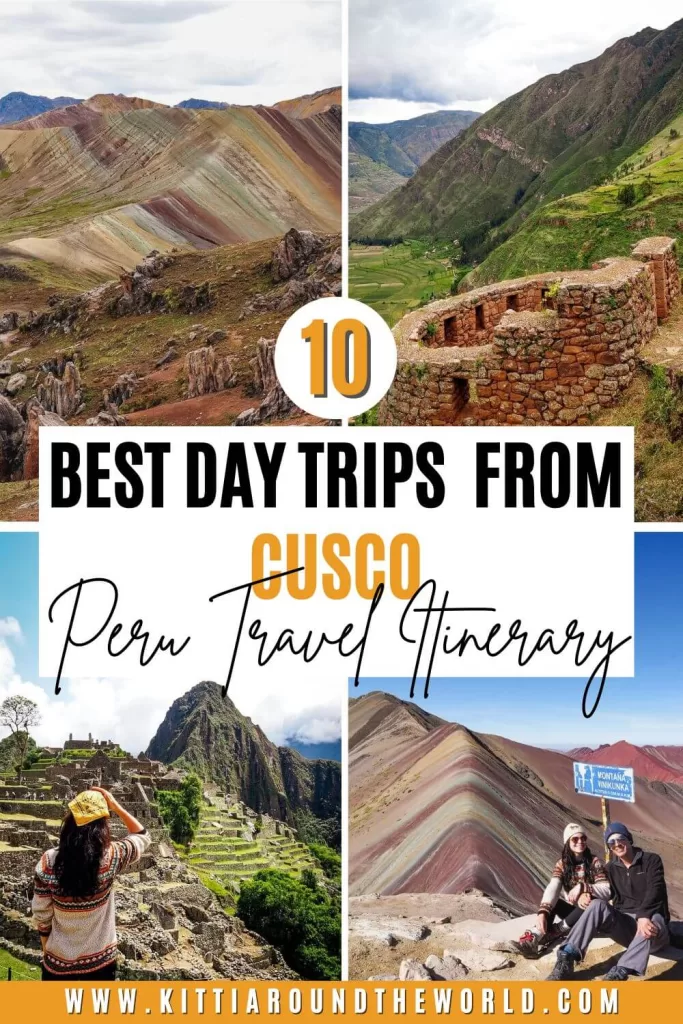
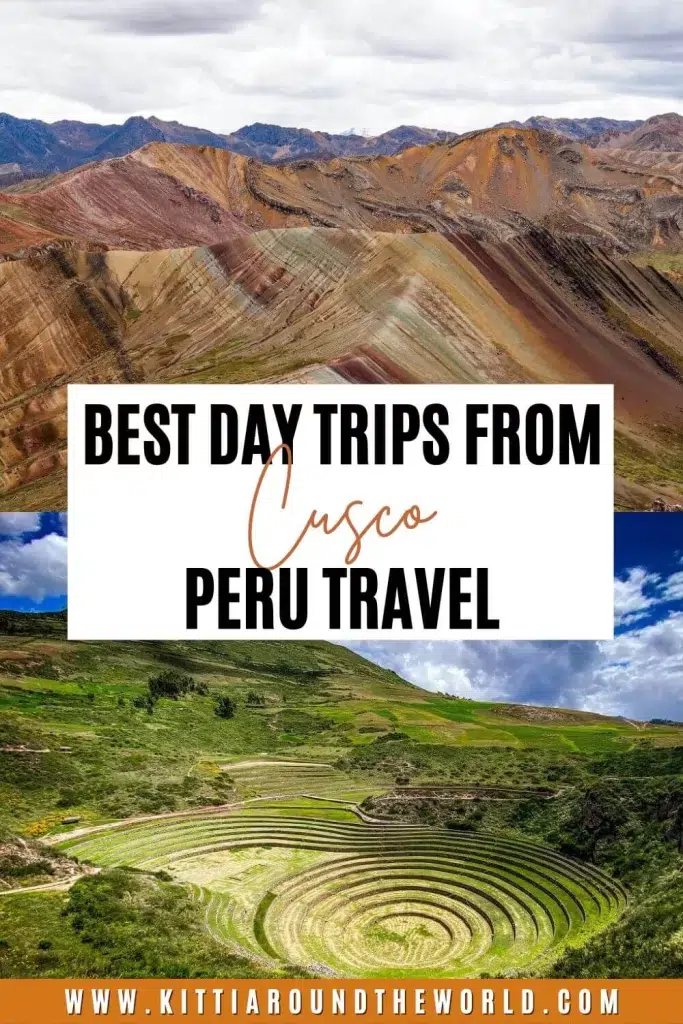


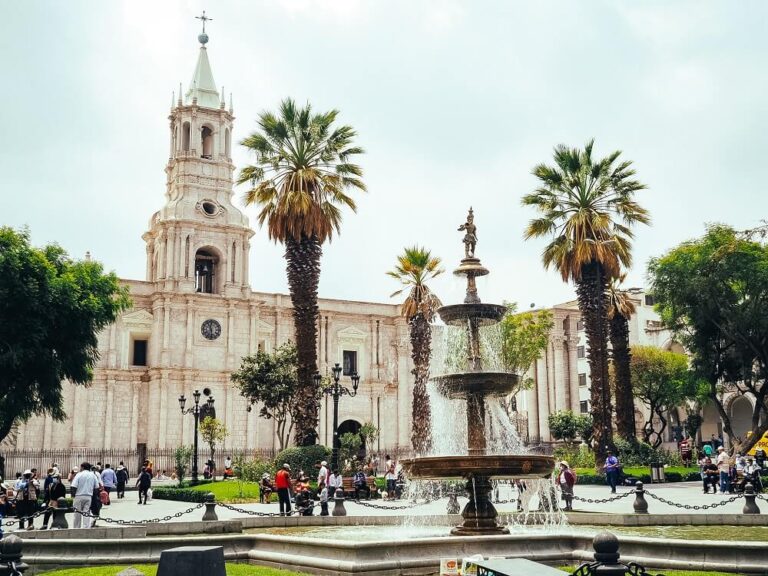
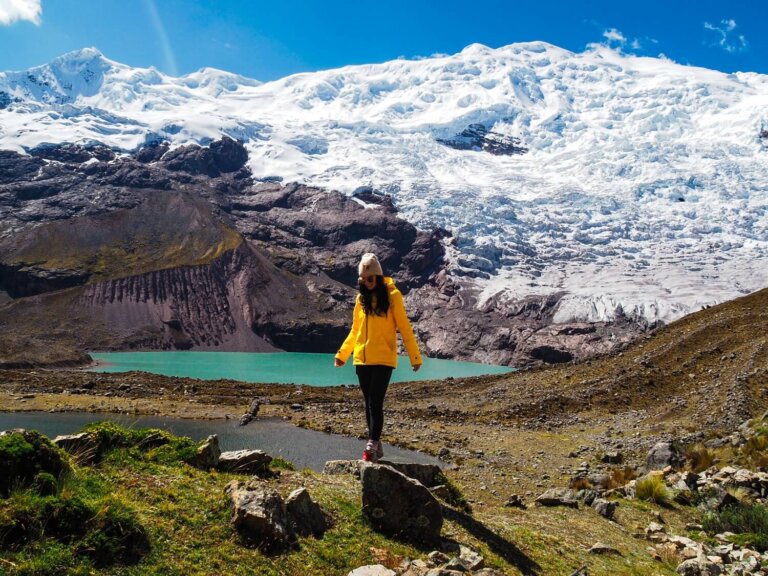
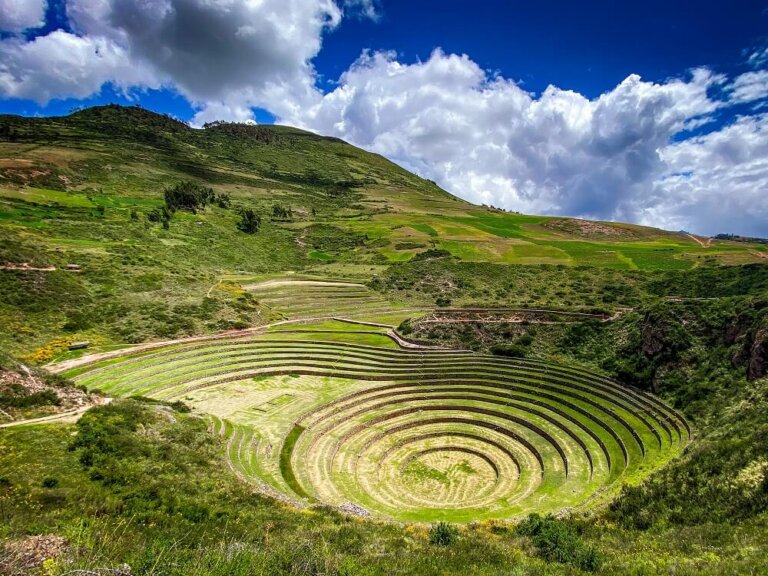
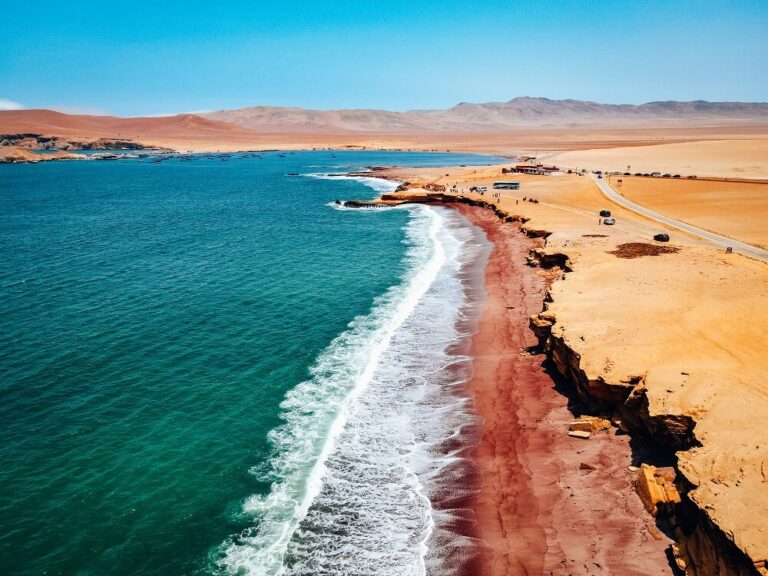
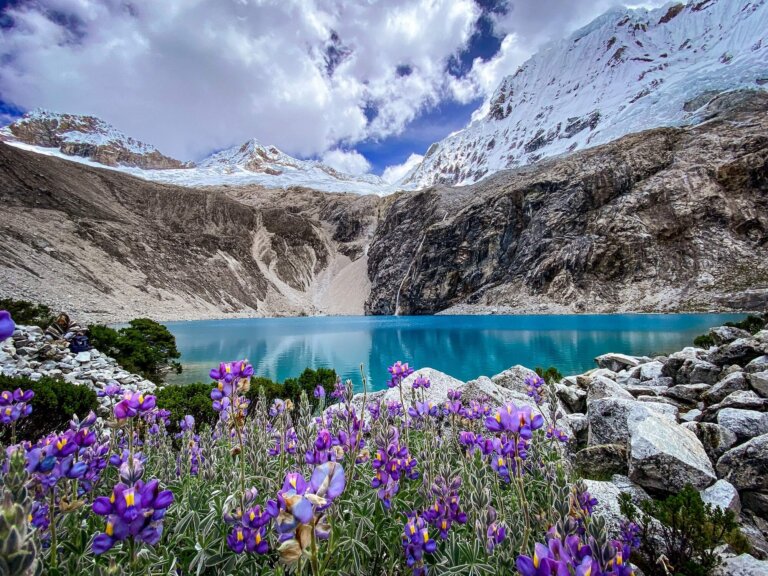

That’s so awesome that you got to spend a month there! Your photos are gorgeous + I love that you included an alternative recommendation for Rainbow Mountain. It’s so sad when over-tourism happens.
Thank you very much Farrah, we feel incredibly lucky to have been able to spend a month in Cusco. I agree, over-tourism is a big issue and there are so many beautiful places in the world.
So cool that you had the opportunity to spend entire month in Cusco, Peru! What an amazing experience! Love all these day trips from Cusco. Would love to see Rainbow Mountain especially!
Thank you so much, we had such an amazing time in Cusco and so glad that we managed to see a lot more than people with less time in the area. Hope you can also visit Peru soon.
Ive always dreamt of visiting Peru and now even more so! Good to know there are so many options available from Cusco as well!
Thanks Marga, we hope that you can visit the country in the near future.
The rainbow mountains!!!! Wow. That is one of the most beautiful pictures I have ever seen. I must see in person! Thank you for sharing!!
Thank you so much Jess, we’re so happy that you loved our Rainbow Mountain photos.
We were very sorry we missed Peru when the pandemic stopped us in South America. But we still have Cusco on our travel wish list. Great to know there are so many great day trips to do from Cusco. And such a great variety of things to see. So much more than just Machu Picchu.
Sorry to hear that you had to cancel Peru! I really hope that you can go back in the near future and be able to spend some time in the country. There are so many stunning places, and the whole Cusco area is otherworldly.
Sounds like you made the most of your month in Cusco! I had no idea there was so much to do there! Sounds like a month is needed to see it all!😍
Thank you Karan, we definitely tried to see as much of Cusco as we possibly could and had a fantastic time there.
That’s amazing you got to spend a month in Cusco! Looks like an amazing experience! I’ll have to remember all these places for a future trip.
Thank you Kelly, we are so grateful that we could have the time to really explore the Cusco area of Peru. It’s such an amazing part of the world.